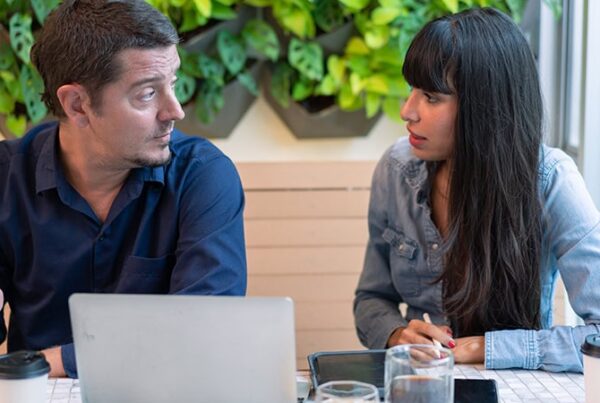
Behind the glamorous headlines and impressive statistics, SaaS companies face the same real-world challenges and uncertainties as the rest of the business world. Whatever you’ve seen on TV, it takes a lot more than saying “I’ve got an idea for an app” to become a successful tech founder.
Less than 1% of SaaS companies will ever reach the annual recurring revenue (ARR) required to become a unicorn (a valuation of at least $1 billion). Yet the language used to describe technology and innovation (disruptive, cutting-edge, game-changing…) can reinforce the idea that SaaS companies possess almost magical powers to revolutionise entire industries overnight.
For those who haven’t already had a taste of it, there’s a tendency to think that scaling a SaaS company is a straightforward matter of ‘build it and they will come’. In fact, scaling demands continuous innovation, substantial investment, and a deep understanding of an ever-evolving landscape. Contrary to popular belief, success in the SaaS industry is hard-won, requiring resilience, strategic foresight, and a relentless commitment to delivering value to customers.
Three factors affecting the ability to scale a SaaS company
Without customers, your company will never get off the ground. Hopefully, it’s a given that you have plenty of customers. But even if you are gaining customers, there are many things that could prevent your business from thriving. The top three factors that cause tech companies problems are:
1. Customer acquisition costs (CAC) and lifetime value (LTV) ratios
In SaaS, you need a favourable balance between the cost of acquiring customers and the revenue generated from those customers over their lifetime. High customer acquisition costs relative to the lifetime value of customers can hinder scalability and profitability.
2. Churn rate and customer retention
Sustaining growth requires not only acquiring new customers but also retaining existing ones. High churn rates, where customers discontinue their subscriptions, can significantly impact revenue and curb scalability. Customer success initiatives, product improvements, and good support will minimise churn and foster long-term customer relationships.
3. Product-market fit and innovation
Achieving, but also maintaining, product-market fit involves continuously innovating and adapting the product to meet evolving customer needs and market demands. Failing to deliver value or falling behind competitors can impede growth and lead to stagnation. Research and development, customer feedback, and iterating the product help to ensure it remains relevant and competitive in the market.
While the SaaS model can generate recurring revenue streams and potentially high profit margins, achieving sustainable growth and profitability requires ongoing investment, strategic planning, and execution. Scaling is very hard, but you do need to scale to keep evolving the product and meeting your customers’ needs.
Tech companies come and go. How can you stay on course?
I discussed this topic recently with Michael Wood, the co-founder of Dext (formerly Receipt Bank) and one of the original pioneers in the Xero cloud accounting ecosystem who has successfully scaled and sold SaaS companies. We talked about Xero’s success globally – their market cap is currently at $18.15 billion, with their annual operating revenue at $1.4 billion. When you see how established they are, it’s easy to forget how much work it took for the company to get here. Founded in 2006, they have invested heavily and worked consistently to gain and then retain their markets.
Michael explained it like this.
“If you are a new player in a sector, you need to be 10 times better than your competitors to go up against them. When Xero started competing against big, established players such as Sage and QuickBooks, they were genuinely 10 times better. They had a cloud-based product and live bank feeds – revolutionary concepts at the time – and a user experience never before seen in the industry. But that alone wasn’t enough to give them market share.”
Xero provides a great lesson in gaining market share
Something that is wildly underestimated by many tech companies just starting out is the scale of investment needed to break into a new market. It took Xero something like $100 million and 10 years of laser focus to crack the UK market, where they now have 1 million users. Imagine trying to get that kind of growth if you are just 20% better than the competition, or even twice as good. You could spend the 10 years and $100 million and get exactly nowhere.
Xero put the effort in, and that investment has paid off with around 4 million users worldwide. But it’s important to note that the model cannot be scaled down too much. You can’t say “If it cost Xero $100 million but I’m only aiming for a market share one hundredth of that, I can just scale my plan down to $1 million over 10 years.” Well, you could; but without the client base you won’t have the investment you need to keep developing the product and those three vital factors I outlined above will suddenly loom large and threaten your long-term viability.
Of course, some tech companies get early success and enjoy a honeymoon period where everything works. They’ve either hit a sweet spot in the market or have a truly fantastic product, and traction starts happening without the growing pains. The problem is that as soon as that happens, you’ll get a handful of competitors emerging very quickly to feast on the market you’ve created. You might have reached the $10 million revenue milestone, but suddenly people are eating your dinner. Even if they don’t have what it takes to stick around, the damage they do could spell your ultimate demise.
As you can see, it takes huge amounts of effort and time to become a global SaaS company. It is really hard. If you dig into Xero’s annual figures, you’ll see that their overheads are much bigger than you’d imagine, with some 80% of revenues going back into product development and marketing.
Not growing simply isn’t an option in SaaS
In contrast to the example of Xero is the story of InVision. Founded in 2011, they developed cutting-edge prototyping and UX design tools that were used by the majority of designers. At the height of its success, InVision was valued at nearly $2 billion, having been launched with $1.5 million in capital in its first year, received $45 million in funding four years later, and then $100 million in 2017. Back then, it was seen as a challenger to Adobe, but this year it is winding down and will close definitively at the end of 2024.
There is plenty of analysis available about why InVision faltered instead of growing from strength to strength. It does appear that it didn’t adequately respond to the rise of a strong competitor in Figma. Market share does not in itself keep the lights on. SaaS companies must keep investing in the product, like Xero does. InVision’s weaknesses probably lay in not keeping up with user needs, not innovating, and not evolving while at the same time letting the stability and user experience of their solutions slip.
The SaaS playbook keeps evolving and so should you
In 2023, the year-on-year growth rate of SaaS companies plummeted to its lowest point in the past five years. Traditional success metrics like the Rule of 40 and Magic Number are being revisited in an unpredictable and competitive market. But the rule that hasn’t changed is that scaling always requires investment. The SaaS business model can be very profitable, but growth requires money.
McKinsey agrees:
“Sales and marketing is one of the biggest expense areas for SaaS companies—amounting to 50 percent or more of revenue in high-growth businesses. The high ratio is partly a result of the business model, in which revenue lags behind investment. But it’s also because many companies are inefficient. Where SaaS companies with the strongest EV/revenue multiples are able to recover their customer acquisition costs in under 16 months, bottom-quartile players take nearly four years to do the same. Top-quartile companies also generate revenue growth 3.5 times faster than the bottom quartile.”
As you grow your startup, the chicken-and-egg dilemma you’ll face is allocating sales and marketing resources based on future opportunity rather than current revenue. It’s the leap that many first-time founders don’t have enough experience or confidence to make, and one of the reasons their businesses will stay small.
Xero approached the UK market with a strategic mindset and understanding of local needs and preferences, tailoring their product to suit the specific requirements of British businesses. They invested heavily in building strong relationships with local accountants and bookkeepers, recognising their influence in recommending accounting software to clients. This helped them to gain credibility and trust within the UK business community. Xero knew that gaining market share involved a long-term commitments to marketing, networking, product adaptation, and regulatory compliance.



